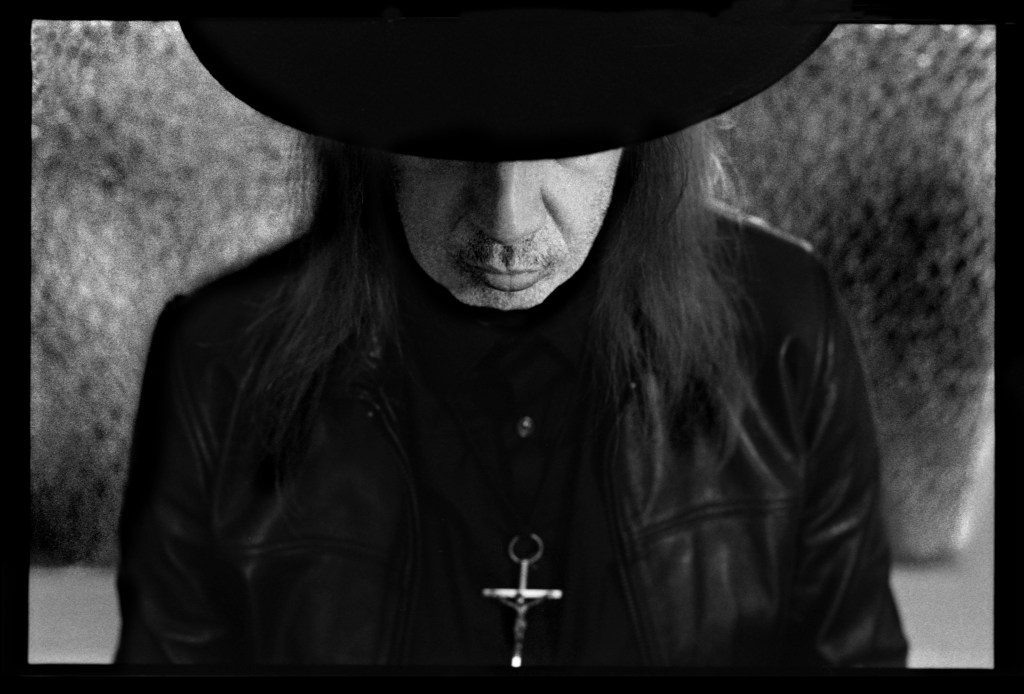
“It’s like a part of my body,” says Jozef Van Wissem of the relationship he has to his chosen instrument, the lute. “The complexity of it is what keeps me going because you can always find something new.”
The ability to constantly extract something different and explore fresh terrain is evident throughout Wissem’s sprawling back catalogue and up to his latest album, The Night Dwells in the Day. Over the years he’s released countless solo albums stretching into double figures, there’s been collaborations with Jim Jarmusch and Tilda Swinton, award-winning computer game soundtracks, along with award-winning film soundtracks, from Jarmusch’s Only Lovers Left Alive to Pierre Creton’s 2023 film A Prince.
Since studying the lute in New York with Patrick O’Brien in the 1990s, Van Wissem has gone on to create works equally as rooted in classical Renaissance and Baroque forms of lute music, as contemporary sounds spanning drones, electronics and field recordings. Throw in some of his formative influences from the no wave and industrial scenes, alongside a dedicated approach to minimalism and this has resulted in Wissem producing distinct and singular work whose sound is often a marriage of opposites; meditative and intense, forward thinking but with a sense of the arcane. The Quietus has called him “probably the most famous lutenist in the world”.
The genesis for his latest album began during lockdown in Warsaw, where Van Wissem splits his time between Rotterdam. “The Call of the Deathbird” was the first song he wrote from the album, one that – over a hypnotic yet beautifully fluid and plucked melody – captures scenes of deserted streets, death and the intense isolation that gripped us all. One of the relatively rare tracks that Wissem sings on – along with some stirring and enveloping guest vocals from Hilary Woods – his towering voice circles above the music much like the swooping deathbird he sings of.
Normally Van Wissem writes all the music for one album within a confined period but this one song from a few years ago stuck around and took on a new lease of life and so joined a bunch of freshly written songs for the album. “That song became something completely different after we made a video for it,” says Van Wissem, who shot a beautiful 10 minute short in Warsaw’s Soviet Mausoleum where the ashes of 20,000 Soviet soldiers lie. “Every time I leave Warsaw, there is this beautiful open space that I see and I wanted to make a video there,” he says. “It has this aesthetic that is symmetric, eerie and militant. But it had nothing to do with the war, this was before Ukraine. In our film the silence of the lute replaces the violent rifle.”
While one song written during, and about, the pandemic came to be the album’s centrepiece, the rest of the album grapples with the world as it moved on and all the dualism and dichotomies that followed. “It has to do with darkness and light,” Van Wissem says of the album. “The title can mean different things to people but sometimes people say that if I play a happy piece of music that it still sounds sad. So this is why I came up with that title.”
A lingering essence of night during the day’s fresh light – something liminal and crepuscular – feels fitting for the music on the album. One that is littered with pretty melodies played with grace and fluidity, as well as moments with a darker and more foreboding hue. Such as the crisp rattling electronics that buzz like crickets on the opening “The Devil is a Fair Angel and the Serpent a Subtle Beast” or the delicate yet deeply atmospheric whirs that churn in the background to “With Our Hands Our Hearts to Raise”. “There’s more drone electronics with this,” says Van Wissem. “I think it’s more of a drone record. I write in mirror images only using maybe two or three chords and I like one chord over a long period of time, like the bands Earth or Sunn O))). It’s much more difficult to write a simple melody that sticks with you then play a thousand notes. It’s the same visually. I really like films when they are open and there’s not too many cuts.”
What Van Wissem manages to do so interestingly and eloquently on this album, and with much of his work, is merge rich musical traditions and history with a contemporary sense of exploration and experimentation. The Renaissance and Baroque lute music he studies and plays is so old it’s written in tablature notation of the time that few musicians understand and know how to play. While he also plucks images, song titles and lyrics from dusty old books to give them a recontextualised lease of life by being integrated into the present-day. “I like to go to markets and find old lyrics that nobody uses and that are not online,” he says. “It’s like this forgotten world somewhere and that really interests me.”
The lyrics on the album’s final track, “The Day of the Lord”, are based on an old hymn book he found. As Van Wissem’s voice booms about “darkness and death” with the lute locked into a pulsing groove alongside looping electronics, it creates a heightened sense of things coming to an end – the album’s own closing rapture. Although, it’s very much a case of only an ending for now, as Van Wissem’s plans for extracting more from his beloved instrument remain plentiful – infinite even, as he proclaims: “the lute is eternal.”
Daniel Dylan Wray